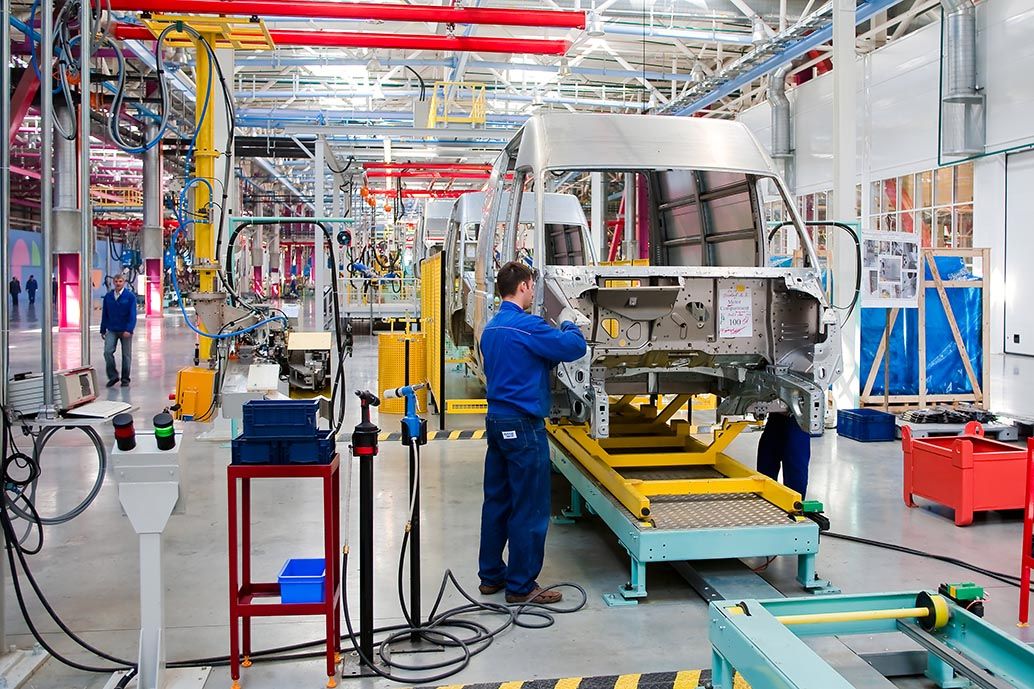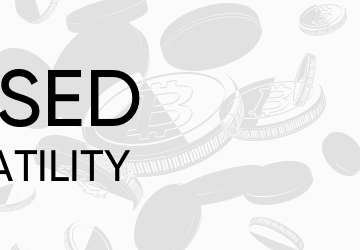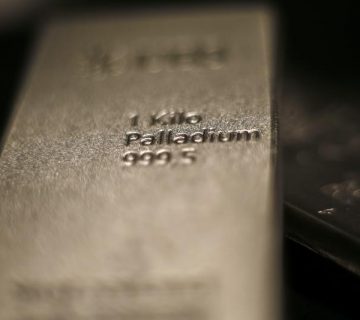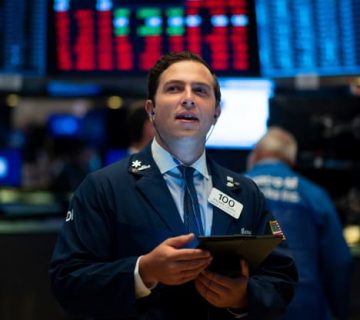– EUR aided by Wilbur Ross comments on EU car tariffs.
– Ross hints delayed U.S.-EU car tariffs may be scrapped.
– Trump’s November 14 decision is a major risk for the EUR.
– But ECB policy to weigh on EUR even if tariffs are averted.
– ING eyes test of 1.12 this week but tips losses into year-end.
– Soc Gen sees soft EUR until U.S.-EU bond yield gap closes.
The Euro rose Monday on a series of favourable trade headlines that have helped put it on course to test a three-month high against the Dollar later this week, according to some forecasts, but the single currency is still being tipped in the city to reach new lows before year-end.
Europe’s unified unit was higher against all major rivals other than the Dollar Monday, which appeared to stabilise following last week’s declines, after Commerce Secretary Wilbur Ross said the White House might not impose tariffs on EU car exports later this month. A weakening Dollar had enabled the Euro to recover last week, ground that was previously ceded to the U.S. currency.
“The current deadline for Trump to make a decision is 14 November. But despite a recent escalation in the Airbus-Boeing dispute, the signs are that he will kick the issue into the long grass once more,” says Constantine Fraser, a European political analyst at TS Lombard. “There is little support in Washington for levies on car imports. Although European cars have been a bugbear for Trump for a long time, he is fairly isolated in his irritation. In contrast to the China trade war, there is significant opposition to car tariffs on Capitol Hill.”
President Donald Trump delayed for 180 days in May, a decision on whether to hit Europe’s car exports with tariffs under the pretext that such imports threaten national security. He’s since said that any such levies would likely be 25% while the European Commission has threatened a prompt retaliation if it is targeted in a move that would open a new front in the trade war, which has so-far remained a bilateral affair between the U.S.-China trade war.
The decision on whether to car tariffs comes at a time of vulnerability for the Eurozone economy and the Euro currency, both of which have been hurt by the U.S.-China trade war and were already grappling a full sleight of other challenges. After all, Federal Reserve (Fed) interest rate policy and the resulting strength of the Dollar have kept the Euro-to-Dollar rate on the back foot for nearly two years now while more recently, European Central Bank (ECB) policy has begun to weigh more heavily too.
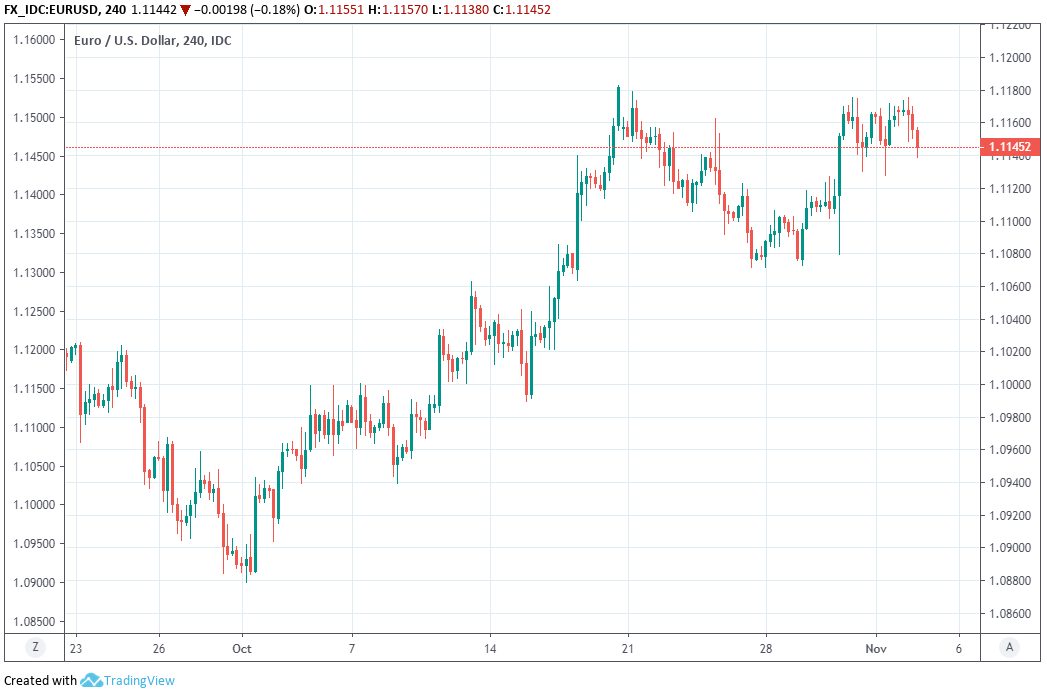 Above: Euro-to-Dollar rate shown at 4-hour intervals.
Above: Euro-to-Dollar rate shown at 4-hour intervals.
“We still see the risk of markets having misplaced their optimism for a breakthrough in trade tensions, although we expect the news flow on trade to remain broadly supportive for risk sentiment this week. All this may translate into another unlucky weak for the dollar and give another chance for EUR/USD to crawl back above 1.12,” says Francesco Pesole, chief FX strategist at ING, in a note sent to clients before Ross’ comments were made.
Monday’s price action follows on from comments made by Chinese officials late last week, who were said to have told Bloomberg News that Beijing sees little prospect of a long-term deal being reached that satisfies U.S. concerns about structural economic issues but that the country is keen to firm up a ‘phase one’ deal struck with President Trump on October 11. Those comments helped lift the Euro into the weekend even if though they also suggested the trade conflict could drag on for a while yet.
The White House said at the time that October’s agreement will address the deficit of intellectual property protections for companies operating in China and that it will provide American banks with access to the Chinese market for financial services, although the pact had not even been written at the time and is yet to be formally agreed to. There had been plans for U.S. and Chinese leaders to sign it at the APEC summit on November 17 until the gathering was cancelled last week by the host, Chile.
“While the ECB delivered a persistency of the easing package (via its open-endedness) the lack of imminence (i.e. no big bang easing package to cause the market to upgrade eurozone growth and inflation expectations) suggests a structurally suppressed EUR vs USD as EZ growth will remain subdued and ECB easing will remain in place,” explains Petr Krpata, a colleague of Pesole’s, in a September note to clients. “On the USD side, despite the slowdown in activity, price pressures do remain solid which make it difficult for the Fed to signal a pronounced and aggressive easing cycle.”
 Above: Euro-to-Dollar rate shown at daily intervals.
Above: Euro-to-Dollar rate shown at daily intervals.
Pesole says a trade-related improvement in risk appetite could see the Dollar soften and the Euro firm this week, potentially enabling the single currency to reclaim the 1.12 handle which would mark a three-month high. However, the ING team is forecasting a 1.05-1.10 range for the final quarter of the year, which suggests not only that the downside could reassert itself on the Euro before long, but also that it could actually plumb new lows by year-end.
A combination of ECB and Fed interest rate policy has always been in the frame for those anticipated declines, but is especially so now the Fed has told markets it’ll take a “material reassessment” of its outlook for the U.S. economy to prompt any further interest rate cuts in the months ahead. The Fed has cut U.S. rates three times this year, but the top end of the Fed Funds rate range is still at 1.75%, far and a way above the 0% level of the ECB’s equivalent rate.
“Over the last 14 years, EUR/USD has averaged 1.27, though Eurozone growth has averaged 0.7% less per annum than US growth. The current 1.1% gap is a bit bigger than average but not enough to justify the level of the currency. That’s down to a real yield differential that is 1% wider than the average. That’s an absurdly huge gap, even if it’s narrowing at the moment,” says Kit Juckes, chief FX strategist Societe Generale. “The yield gap needs to narrow a lot more before the euro gets any real support.”
The wide gap between interest rates in the U.S. and Eurozone has bolstered the attractiveness of the Dollar to investors and radically reduced analyst estimates of ‘fair value’ for the Euro currency in recent quarters, even if the mismatch itself has narrowed in recent months.
Juckes says the rate differential will act like a ball and chain around the ankles of the Euro until the gap closes meaningfully. The Euro has been unable to capitalise on a decline in U.S. bond yields brought about by Fed rate cuts, which has narrowed the yield differential slightly, because investors see the improvement as unsustainable the entire time that such a significant gap between U.S.-EU economic growth rates also persists.
Source: PoundSterling LIVE


